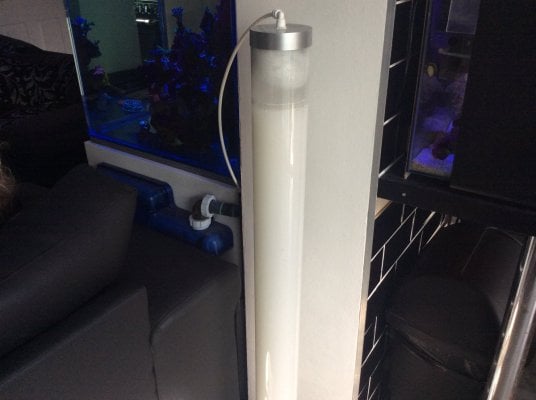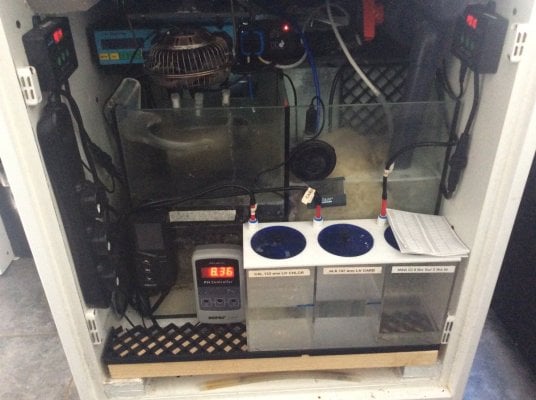With ref to @Doctorgori thread a while ago;

 www.reef2reef.com
www.reef2reef.com
His thread was based around changing a saturated calcium hydroxide into calcium carbonate by reducing the CO2 content in air passed through it to ultimately reduce CO2 in the tank.
Please correct me if I’m wrong, but a Kalk slurry should increase the capacity and therefore minimise maintenance intervals, as the carbonate precipitated would then be replaced by some of the undesolved kalk, dissolving. I don’t really have a problem with adding some sodium hydroxide to improve efficiency but for now I’ve filled a large bubble lamp with slurry and its doing a grand job (1st day, lol). From what I gather, the dry CO2 media is manufactured by rolling Kalk with sodium hydroxide, to form pellets. I’m not feeding a skimmer with this air, but I am feeding a skimmer pump, which is churning away in the sump.
Been meaning to try this for a while and it’s been a few months since I messed with something that didn’t need messing with, so there you go, lol

Pulling air through saturated kalk
I have no chemistry skills past HS, so what would be in the gas? edited to add; appreciate any thoughts
 www.reef2reef.com
www.reef2reef.com
His thread was based around changing a saturated calcium hydroxide into calcium carbonate by reducing the CO2 content in air passed through it to ultimately reduce CO2 in the tank.
Please correct me if I’m wrong, but a Kalk slurry should increase the capacity and therefore minimise maintenance intervals, as the carbonate precipitated would then be replaced by some of the undesolved kalk, dissolving. I don’t really have a problem with adding some sodium hydroxide to improve efficiency but for now I’ve filled a large bubble lamp with slurry and its doing a grand job (1st day, lol). From what I gather, the dry CO2 media is manufactured by rolling Kalk with sodium hydroxide, to form pellets. I’m not feeding a skimmer with this air, but I am feeding a skimmer pump, which is churning away in the sump.
Been meaning to try this for a while and it’s been a few months since I messed with something that didn’t need messing with, so there you go, lol






















